There was a very obscure unpublished poet, Samuel Greenberg (1893–1917), who so impressed Hart Crane (1899–1932) that Crane took lines from Greenberg as his own. The slipperiness of whether or not Crane was influenced by Greenberg or completely stole from Greenberg is evaded in the biographies of Crane.
Because of Greenberg’s complete obscurity and Crane’s status as a major figure of American modernism, the specter of Greenberg’s actual poems and influence needs a closer look.
Greenberg was a Jewish immigrant from the Vienna ghetto—he was poor, uneducated, and died horribly and early. Crane was the WASP son of a wealthy candy magnate—he was self-destructive, hedonistic, and also died horribly and early.
Greenberg was the sixth of eight children born in the Vienna ghetto to Jacob and Hannah Greenberg. Greenberg’s father made a living embroidering gold and silver brocades for religious items (e.g. challah covers). At the turn of the century, the family moved to the Lower East Side. Greenberg When Greenberg was thirteen, his mother died, and as a result, Greenberg dropped out of school to work in an older brother’s leather shop. He contracted tuberculosis there and is buried at Mount Hebron Cemetery in Flushing, Queens. Greenberg lived in poverty and was always a young person.
Crane first read Greenberg’s manuscript in December, 1922, while visiting William Fisher. Fisher had become acquainted with Greenberg and had many of Greenberg’s handwritten poems in his possession after Greenberg had died on Ward’s Island from tuberculosis.
In a letter from December 20, 1923, to Gorham Munson, Crane wrote: “Did you ever see some of the hobbling yet really gorgeous attempts that boy made without any education or time except when he became confined to a cot?”
Crane wrote down numerous Greenberg poems into his notebook, and they were a major influence on Crane’s first book, White Buildings. The most striking example of Crane’s borrowing / stealing is in “Emblem of Conduct,” based on Greenberg’s poem “Conduct.”
Greenberg’s poems are almost like proto-Crane poems. Keats, Shelley, Browning, and Emerson are everywhere in Greenberg’s poems, as Greenberg is everywhere in Crane’s.
In “Immortality,” Greenberg wrote: “The museums of the ancient, fine stones / For bowls and cups, found Historians / Sacred adorations…” Crane’s poem “Emblems of Conduct” includes the line: “Bowls and cups fill historians with adorations.”
In “Perusal,” Greenberg wrote: “The astronomer follows closely his / Trail across heavens width, the apostle / Reigns o’er the community in conveying…” Crane’s poem “Emblems of Conduct” includes the lines: “Orators follow the universe / And radio the complete laws to the people. / The apostle conveys thought through discipline.”
Greenberg’s poems often use abstract nouns as titles (“Immortality,” “Lust,” “Science,” “Memory,” “Love”), and his almost archaic syntax ironically comes from his informal or nonexistent education.
Still, Greenberg’s off-rhymes (sang / wrung; Forest / quest) are inventive, and his textured and surprising images (“Anatomy’s lace wrung”) anticipate the breakthroughs of later Crane. Greenberg’s misspellings (“Psycologist,” “paintor,” “patence,”“creat imotional”) are like folk art quirks, or residue.
Greenberg could also dip into Surrealism, as in his poem “The Street Lamp and the Eyelid.”
If Crane hadn’t copied Greenberg, no one would have ever heard of Greenberg; of course the inverse is also true: Crane did copy Greenberg, and still no one has ever heard of Greenberg.
Besides Greenberg’s literal language and style, Crane also admired his frustrated genius—or perhaps he could just relate to it. Crane called Greenberg “a Rimbaud in embryo” and his poems “unspeakably eerie.” When Allen Tate and Malcolm Cowley encouraged Crane to include “Emblems of Conduct” in White Buildings, they didn’t know Crane had “borrowed” from Greenberg.
The world isn’t fair, and it wasn’t kind to Samuel Greenberg. Thanks to Crane’s admiration and foolish mimicry or use of Greenberg’s art, I think we can now appreciate the pleasures of both Greenberg and Crane.
Thomas Lux covered the broad strokes of this subject in his poem “Here’s to Samuel Greenberg”:
For further reading:
Crane, Hart. Complete Poems of Hart Crane. New York: Liveright, 1993. [Buy at Bookshop]
Greenberg, Samuel. Poems from the Greenberg Manuscripts. New York: New Directions, 2019. [Buy at Bookshop]
Lux, Thomas. New and Selected Poems of Thomas Lux: 1975-1995. New York: HarperCollins, 1999. [Buy at Bookshop]
About Sean Singer








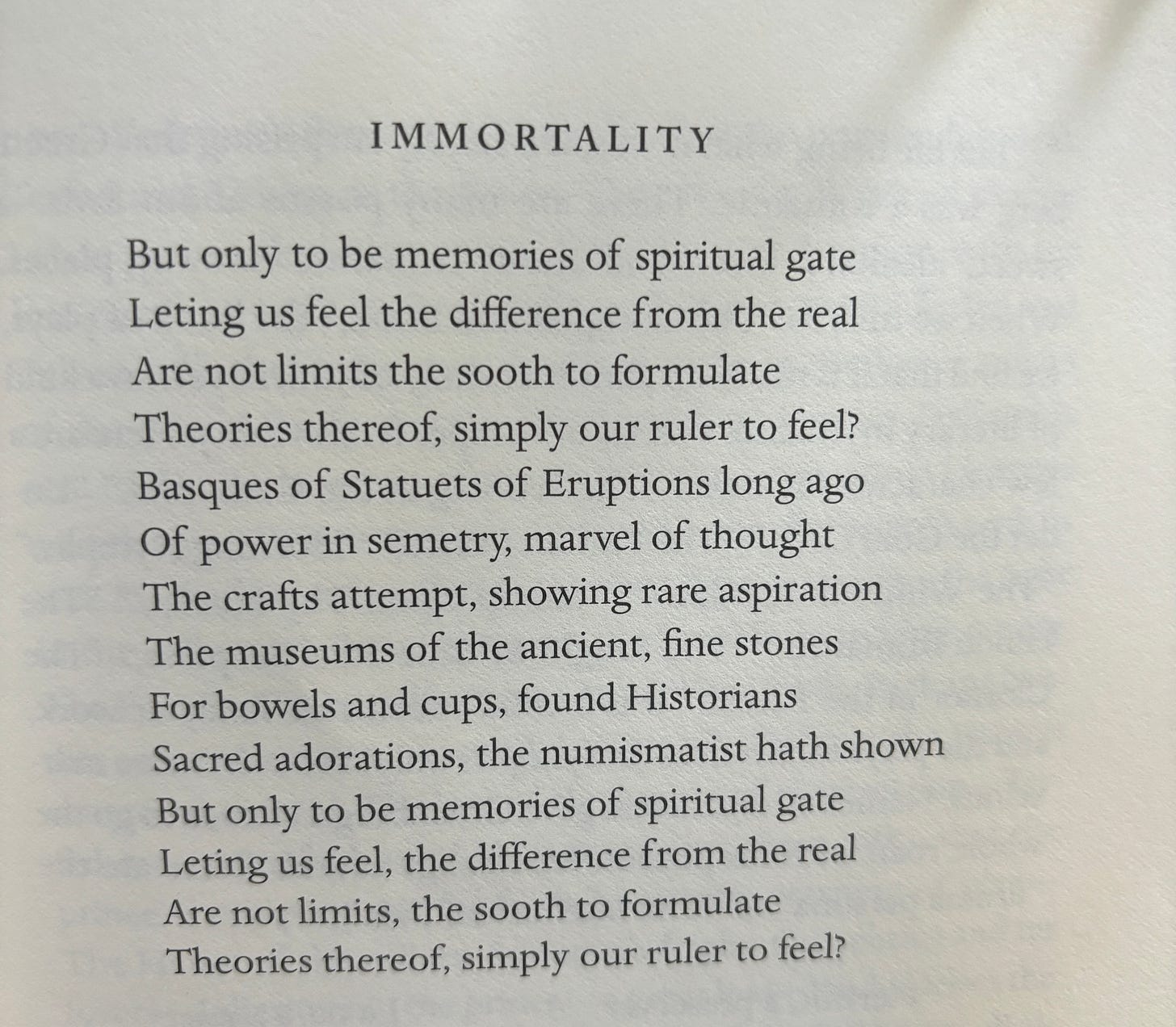
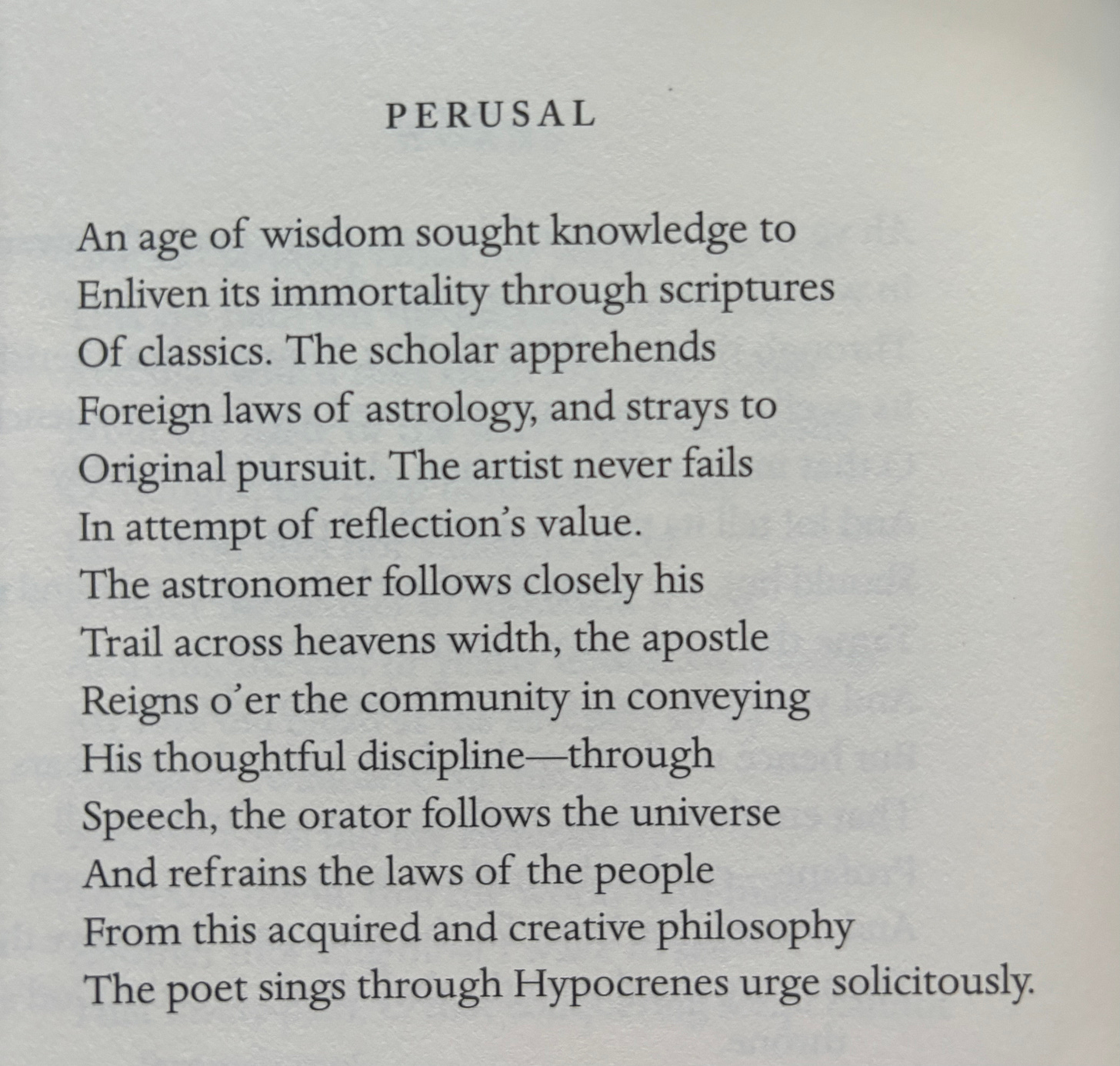
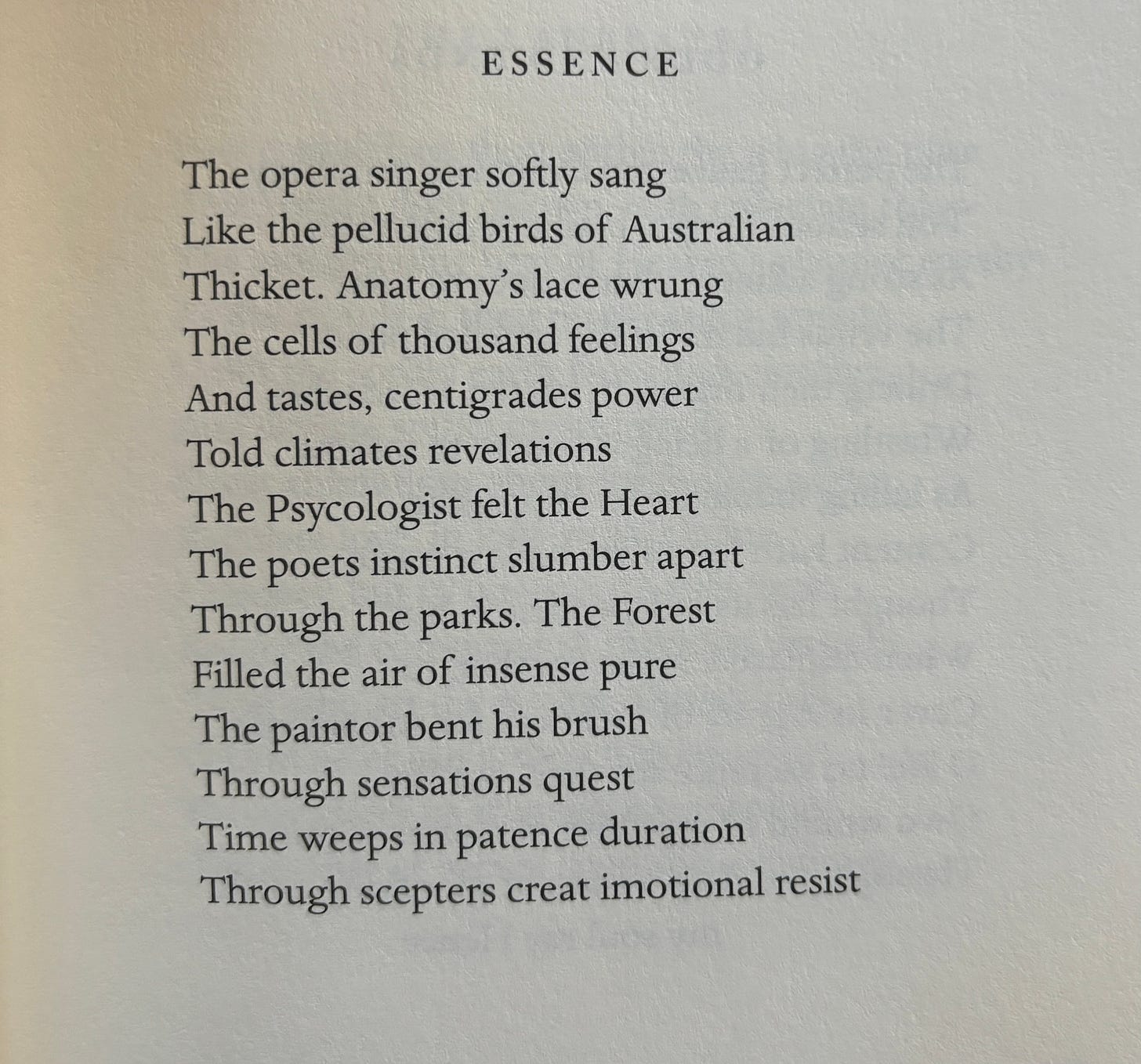
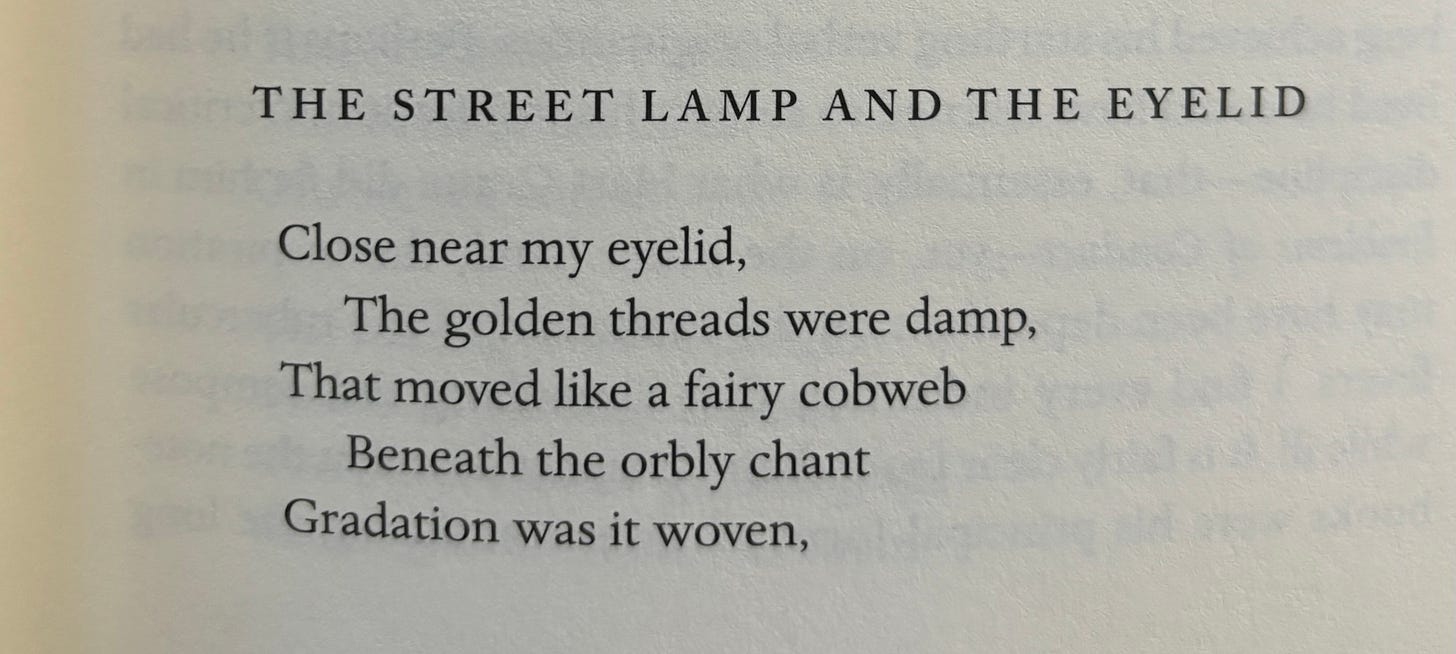
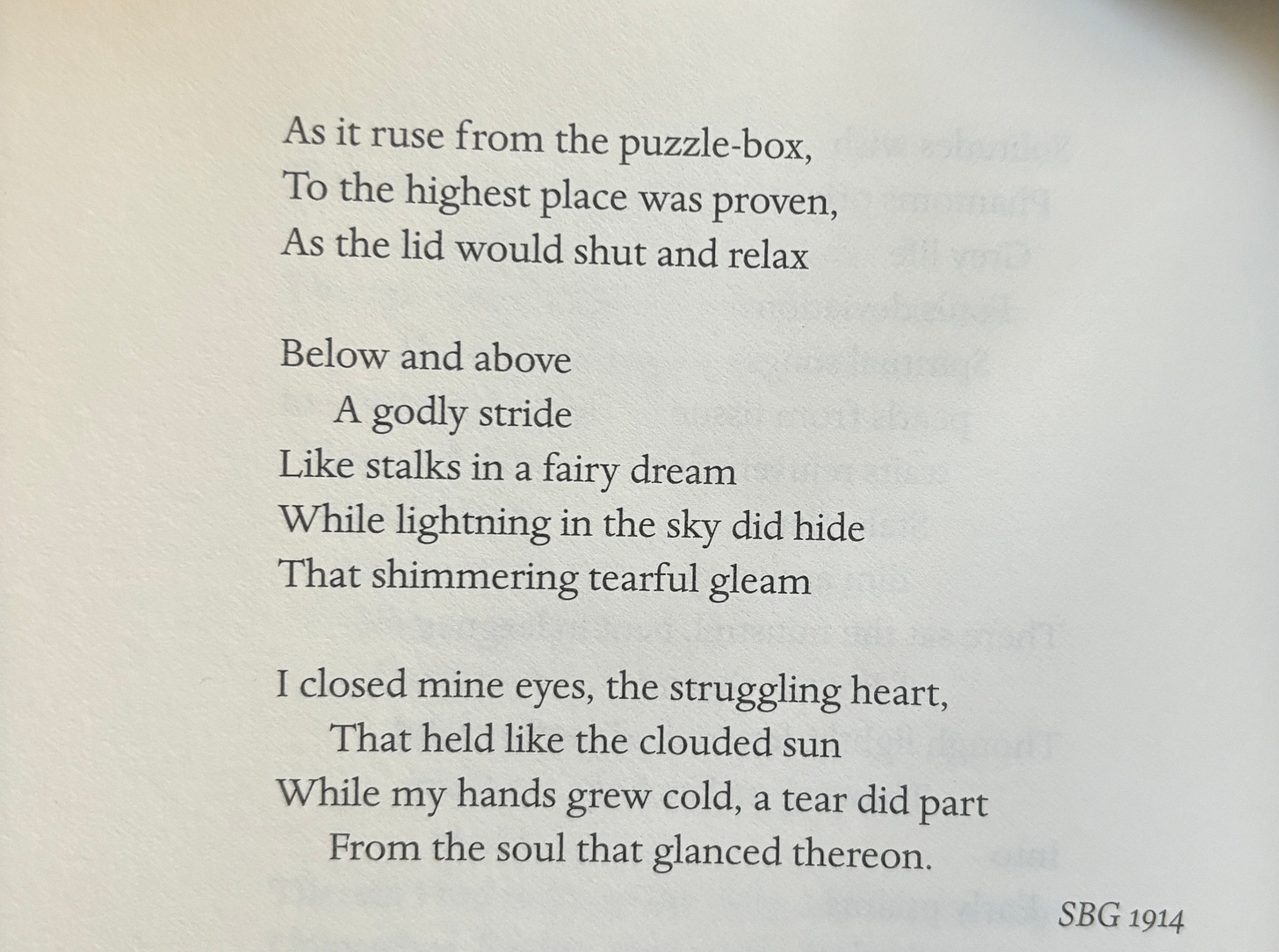
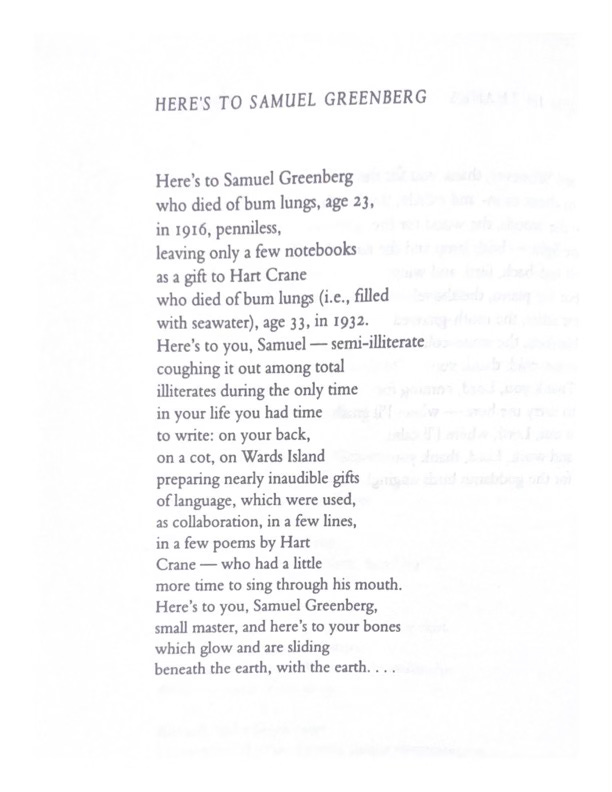
Fascinating! Definitely thought provoking
Wow, just wow…